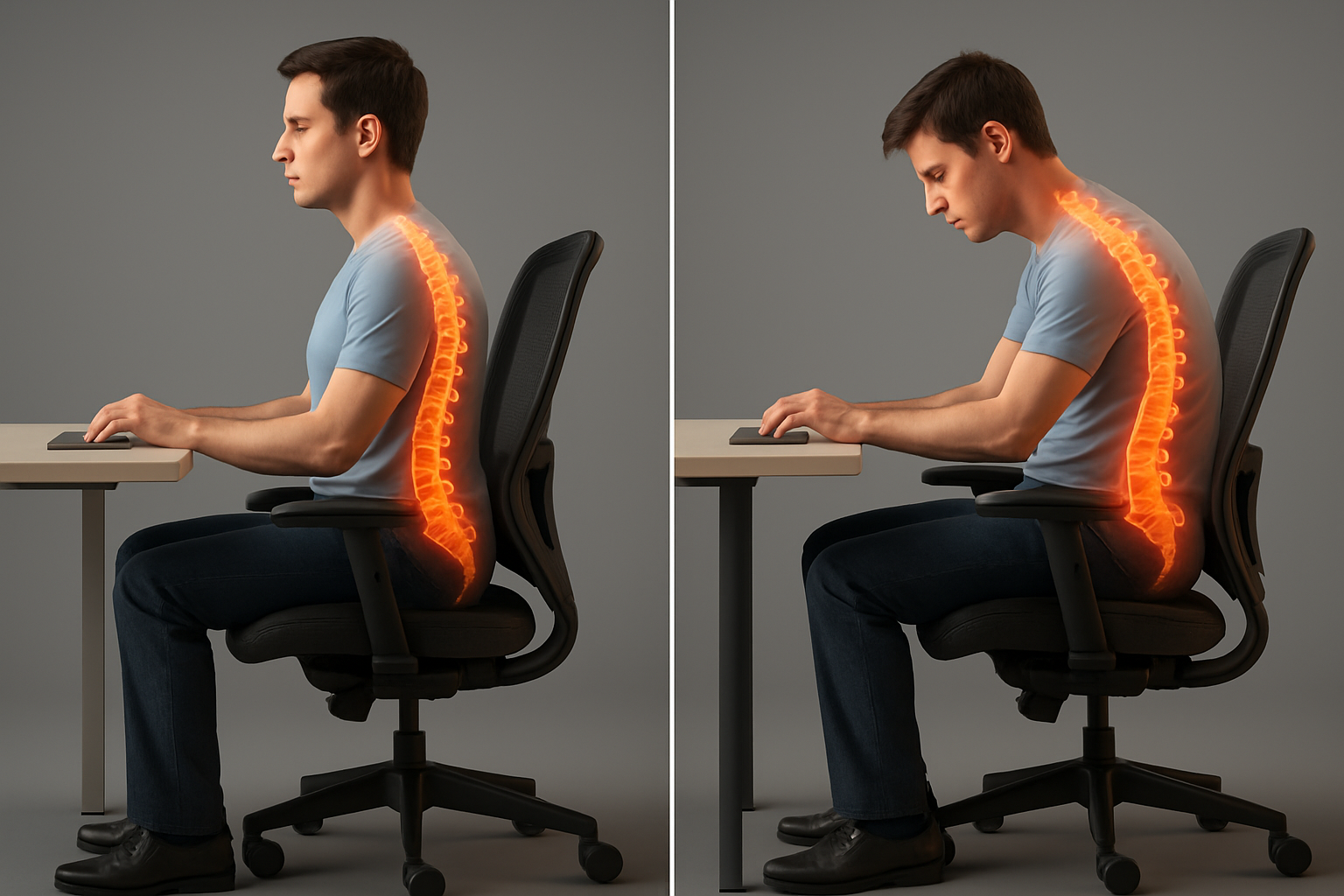Why Spine Alignment Matters More Than You Think in Office Seating

Most people think of office chairs as a matter of comfort: soft cushion, adjustable height, maybe a reclining back. But there’s something far more important at stake—your spine alignment. How your spine is supported while sitting for long hours can influence everything from chronic back pain to mental focus and productivity.
The Spine: More Than Just Support
Your spine is more than a column of bones. It’s a central support structure that protects your spinal cord and keeps your body balanced. The natural S-curve of a healthy spine distributes weight evenly and reduces stress on muscles, ligaments, and discs.
When that natural alignment is compromised—often by poor office seating or bad posture—it starts a chain reaction:
- Muscles overcompensate
- Discs compress
- Nerves become irritated
The result? Pain, stiffness, and fatigue, which can drastically affect your work and overall well-being.
How Poor Office Seating Breaks Your Alignment
Most standard office chairs don’t provide lumbar support or encourage an upright posture. Sitting slouched or leaning forward:
- Flattens the lumbar curve of the lower back
- Puts excess pressure on discs
- Weakens core muscles over time
As the hours turn into days, weeks, and years, these small misalignments cause big problems. It’s why so many office workers develop lower back pain, neck stiffness, and tension headaches despite being relatively young.
The Impact on Productivity
Bad posture doesn’t just hurt your body—it affects how you think and perform. When you’re constantly adjusting to relieve pain or fighting fatigue from poor posture:
- Focus drops (your brain is distracted by discomfort)
- Energy decreases (muscles tire out quicker)
- Stress increases (pain itself is a stressor)
On the other hand, proper spine alignment through good seating keeps the nervous system free from unnecessary strain. That means better mental clarity, sharper decision-making, and sustained energy throughout the workday.
Ergonomic Seating: What to Look For
The good news? The right ergonomic chair can help maintain healthy spine alignment. Here’s what to look for:
- Lumbar Support: A curve that fits the natural S-shape of your spine, especially in the lower back.
- Seat Depth Adjustment: Your back stays in contact with the backrest while leaving 2–3 fingers of space behind your knees.
- Adjustable Backrest: Lets you maintain an open, upright posture without slouching.
- Dynamic Movement: Chairs that encourage micro-movements—slight tilts and shifts—keep muscles engaged.
- Correct Desk Setup: Even the best chair won’t help if your screen and desk are positioned incorrectly.
A Small Case Study: Meera’s Back Pain Solution
Meera, a 34‑year‑old marketing professional, spent years working in a low-cost office chair. She thought occasional stretches were enough to counteract her slouched posture. But over time, she developed chronic lower back pain that made focusing at work nearly impossible.
After switching to a high-quality ergonomic office chair with lumbar support, and adjusting her workstation:
- Within 3 weeks, her pain reduced significantly.
- Her posture improved naturally without conscious effort.
- She reported being able to “work longer with less stress and no constant distraction from pain.”
Her experience is a classic example: alignment first, comfort follows.
Simple Daily Practices for Better Alignment
Even with an ergonomic chair, good habits matter:
- Sit with feet flat on the floor, knees at 90 degrees.
- Keep shoulders relaxed and screen top at eye level.
- Take short standing or walking breaks every 30–45 minutes.
- Do simple stretches like shoulder rolls and back extensions.
These micro adjustments, combined with supportive seating, help protect your spine long-term.

Conclusion: Don’t Underestimate Your Spine
The importance of spine alignment in office seating cannot be overstated. It’s not just about avoiding back pain; it’s about boosting your focus, productivity, and long-term health. When choosing an office chair, make spine alignment a priority—you’ll feel the difference not only in your body but in your work.





